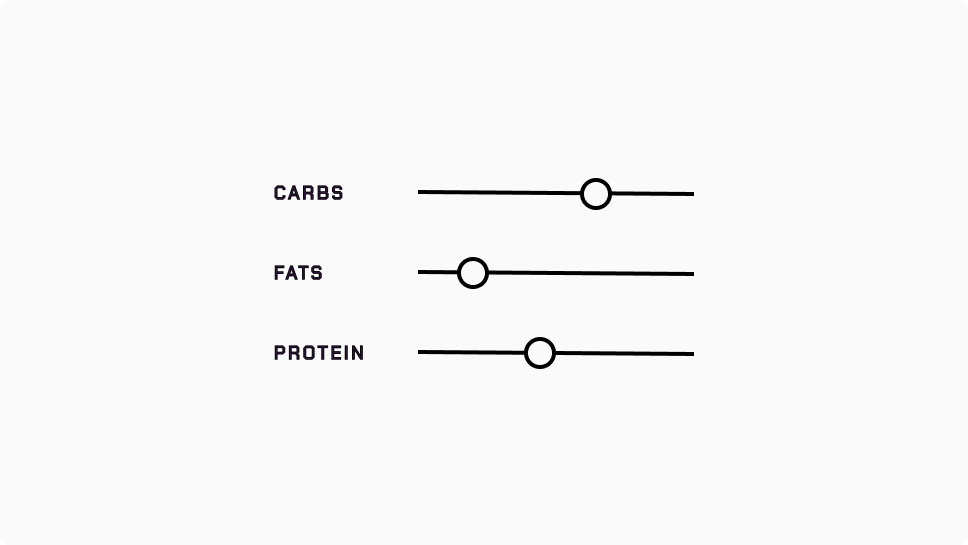Table of Contents
Diet is probably the most important single factor in your health, body composition, and overall appearance
But, everyone’s body, nutritional needs are surprisingly different.
So, this guide is designed to help you customise your nutrition to your own personal needs and goals.
⚖️ Should You Track Your Nutrition?
If you’re not looking to compete, you may not need to track your nutrition to hit your goals.
By being too focused on accurate tracking, you’ll lose your sanity. So the advice for 99% of people is to be as accurate and flexible as you need to be consistent enough to hit your specific fitness goals.
Meal plans are also too rigid and unnecessary for most people. They’re good as a learning tool. but beyond that they can be restrictive and lead to black-or-white thinking.
The bottom line is that good and bad foods don’t really exist. For example, the only problem with cake is that it’s relatively devoid of micronutrients. So, the better approach is to make sure you eat enough ‘healthy food’ with the right micronutrients and macronutrients, then after that it doesn’t matter.
There are no gold stars for only eating healthy food.
Tracking Bodyweight
If you want to track your weight, do it first thing in the morning after you use the bathroom – before you eat or drink anything, naked.
Use daily weigh-ins to find a weekly average of how your weight changes.
⚡️ Should I Cut Fat or Gain Muscle?
Putting on muscle and cutting fat at the same time is not efficient. Do one at a time.
Deciding which to do is not quite as simple as saying cut if you have a high body fat and gain if not.
But, as a rough guideline: you should aim for max ~15% body fat (for men)
In the gaining phase, you should allow your body fat to climb ~3-5%, before doing a brief mini cut to clean things up before repeating.
A general recommendation is to have a minimum 4:1 ratio of the time spent in a gaining phase vs a cutting phase e.g. 4 months gain, 1 month cut.
Finding Your Maintenance Calories
Your maintenance calories tell you how many calories your body needs to maintain your current weight.
Knowing this will help you to gain or lose weight at an appropriate rate.
To find your maintenance calories, track your food and weight for 2 weeks. I use MyFitnessPal to do this, but you can use whatever you like (even pen and paper, if you find that easiest).
Them knowing that 1lb (0.5kg) of adipose tissue contains ~3500 calories, you can estimate the surplus/deficit you’re in.
For example, a gain of 0.5kg in a week means you’re consuming ~500 calories over maintenance per day (7 days x 500 calories = 3500 calories).
Weight Loss
Aim to lose weight at a rate of 0.5 to 1 percent of body weight per week to minimise muscle and strength loss.
For example, if you’re 82kg that’s about 0.4kg – 0.8kg per week in weight loss.
Cardio Use for Weight Loss
Cardio shouldn’t be the primary vehicle for fat loss, it’s diet.
But High-Intensity Interval Training (HIIT) is probably the best form of cardio as the risk of interference is low and increases the metabolic rate.
If you’re trying to maintain maximum muscle mass, your total cardio should be no more than half the time spent lifting weights. And choose cardio that’s easy on the joints e.g. rowing, cycling, and swimming.
In particular, you should do moderate intensity cardio max 1 hour per week and cap HIIT sessions to 2x per week, for max 30 minutes each. For example, weights for 4 hours gives you 2 hours of cardio (1 hour HIIT, 30 minutes low intensity, 30 minutes mid intensity).
Cardio Energy Expenditure
A simple way to estimate energy expenditure during cardio requires using a rating of perceived exertion (RPE) during exercise.
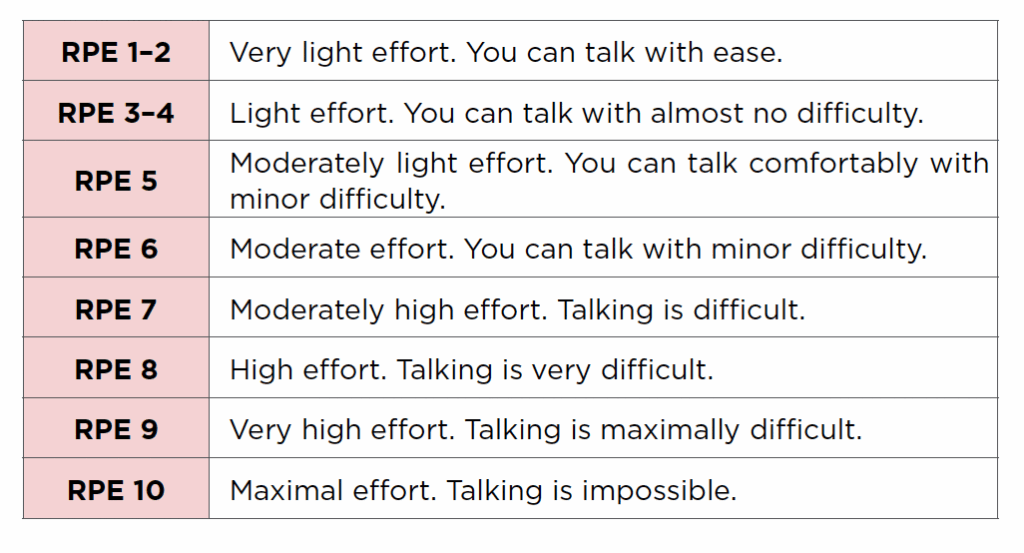
If you know your body weight and time doing cardio, you can estimate calorific expenditure fairly accurately.
You burn approximately ~0.2, ~0.45, and ~0.7 kcal per 10 minutes per pound of body weight doing light (RPE 2-4 out of 10), moderate (RPE 5-7 out of 10), and vigorous (RPE 8-10 out of 10) cardio respectively.

Weight Gain
Your rate of monthly weight gain should be different depending on your experience level.
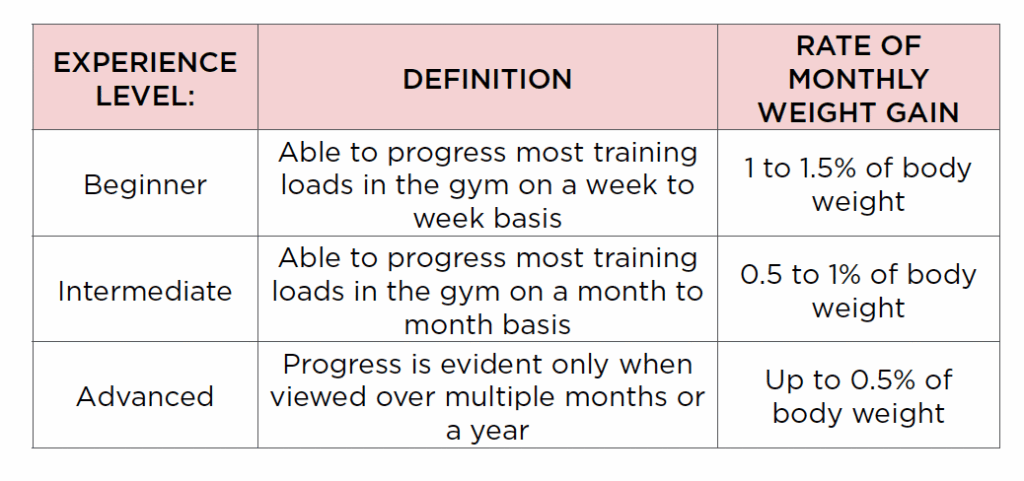
If you go faster than this, the weight you put on will probably be proportionately more body fat.
The 3500 calorie rule holds up pretty well for weight gain too (as it does for weight loss). But only use this as a guide – track your weight and adjust your calories accordingly.
Energy Availability
Energy availability refers to whether or not you have enough energy to maintain the energy demands of exercise plus normal physiological functions. Prolonged low energy availability can have long-term negative health consequences.
The key takeaway here is that if you maintain a leaner physique than your body ‘wants’ (which often requires a lower energy intake than your body needs to maintain full functionality) there can be health and performance consequence.
So bear this in mind when cutting.
🍗 Macronutrients
Macronutrients (or macros) are the essential nutrients your body needs in larger quantities. In other words, fat, protein, and carbohydrates.
Calculating Your Macros
When calculating your macronutrients the general idea is as follows:
- Calculate protein relative to body weight.
- Calculate fats and carbs based on percentage of calories.
Note: there are 9 calories per gram of fat, and then ~4 calories per gram for both carbs and protein.

Macros for Fat Loss
Protein: Most researchers advise consuming protein in the range of 1.0 to 1.2g/lb (2.2 – 2.6g/kg) of body weight while dieting to offset body protein losses to help preserve muscle mass.
Carbs & Fat: 15-25% of calories should come from fat and the remaining calories should be assigned to carbs. It’s possible that you may end up with way too little fat or carbs using this formula, though. So, to prevent this, use the minimum intakes of 0.25 g/lb (~0.5 g/kg) for dietary fat, and 0.5 g/lb (~1 g/kg) for dietary carbohydrate.
If you want to prevent lean body mass during a diet, lifting weights is the number one thing you can do. Number two would be your rate of weight loss. And number three would be the macronutrient intake itself.
Macros for Weight Gain
Protein: Consume protein in the range ~0.7-1.0 g/lb (1.6–2.2 g/kg) of body weight
Carbs & Fat: 20-30% of calories should come from fat (but can go as high as 40%) and the rest from carbs. But focus more on the total calories and protein as the carb/fat ratio doesn’t make that much difference when not dieting.
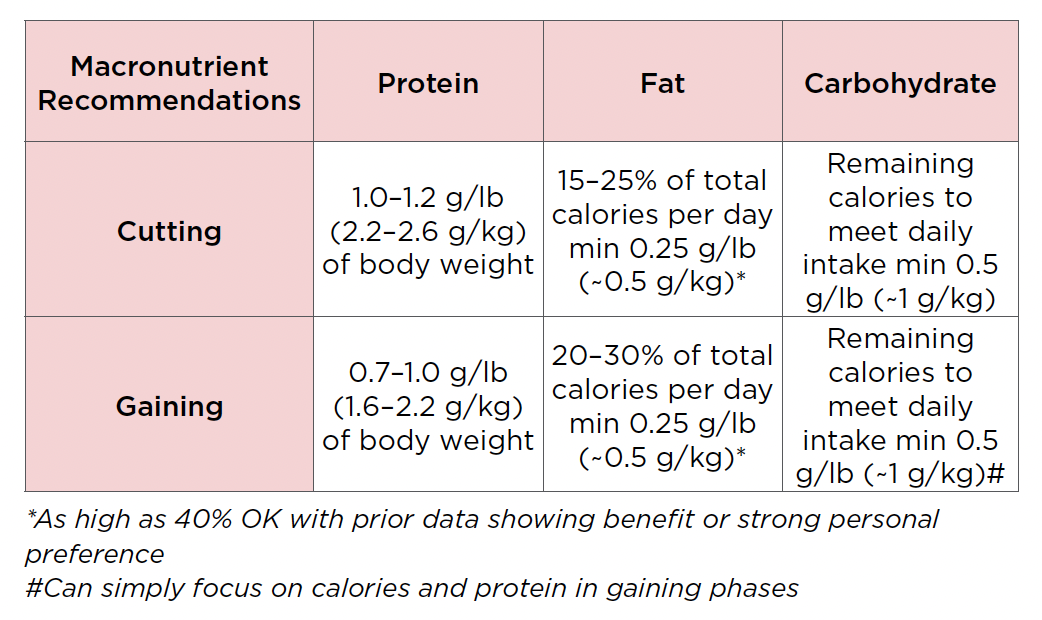
Fibre
The US recommendation for fibre intake is 14g/1000 kcals, which is about 38g/day for men.
As a decent maximum, don’t go above 20% of your total carb intake in any given day (so a 400g carb intake would cap at 80g of fibre).
🍎 Micronutrients
There are two broad categories of micronutrients: Minerals (which are inorganic) & Vitamins (which are organic).
Minerals
The macrominerals we need in great abundance are: calcium, phosphorous, potassium, sulphur, sodium, chlorine, and magnesium.
Trace minerals that we also need include: iron, copper, cobalt, zinc, molybdenum, iodine, and seleneum.
Vitamins
Fat-soluble vitamins are absorbed in the small intestines and their effects last for longer e.g. vitamins A, D, E, and K.
Water-soluble vitamins, on the other hand, are excreted quickly so we need to consume them more often e.g. vitamins B and C.
Micronutrient Deficiencies
When dieting, it’s easy to be deficient with your micronutrients. These are the main considerations:
- The most common micronutrient deficiencies are vitamin D, calcium, zinc, magnesium, and iron.
- Zinc deficiencies can negatively impact your metabolism.
- Iron deficiencies can negatively impact strength.
- Calcium deficiencies can negatively impact bone health.
When gaining you may be less hungry, so it’s easy to forget about fruit and vegetables, which are high in fibre, water, and micronutrients.
Fruit & Vegetables Recommendations
In general, the standard guideline of ~5 servings per day of fruit and vegetables is a good one.
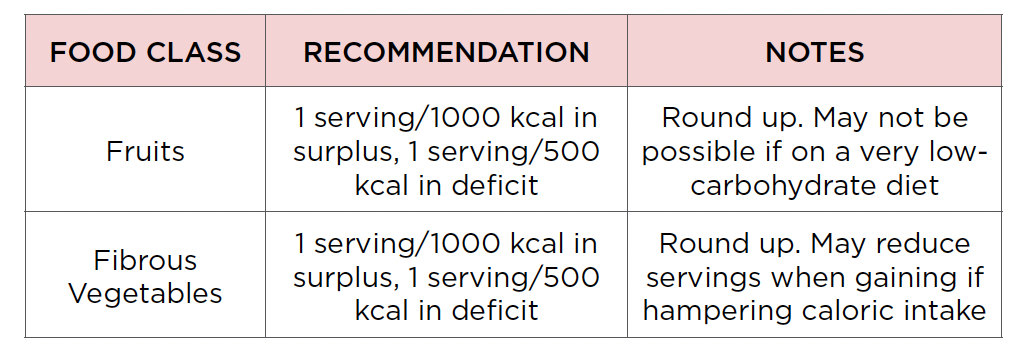
Water & Fluids
Any fluid (besides alcohol) counts towards this intake.
Alcohol doesn’t count because it’s dehydrating (it makes you urinate more fluid than you take in).
My recommendation is to auto regulate fluid by assessing the colour of your urine. But, as general guideline:

⏳ Nutrient Timing & Frequency
Diet Breaks (Diet Periodisation)
Occasionally have a break in your diet to avoid the negative side effects that can come with a prolonged calorific deficit.
My recommendation is to take diet breaks if you’re dieting for three months or longer. In which case, do a week long diet break every 4-8 weeks.
The goal during the diet break is to get out of the calorie deficit and consume close to your maintenance calories. Plus, drop your cardio by 50% for that week.
Refeeds
A refeed is a temporary break from calorie restrictions, that occur more regularly than diet breaks.
The idea is to use a 24 hour refeed where calories are brought to maintenance, primarily via an increase in carbs, if you’re higher in body fat when beginning a diet.
If you’re leaner (below around 12% body fat for men), a multi-day refeed may be better to help prevent metabolic adaptation (to a degree) and result in superior body composition at the end of your diet, compared to dieting all the way through.
The multi-day refeed should ideally be two days in a row a week.
Meal Frequency
The data suggests if you’re eating in the range of 3-6 meals, there’s little difference on body composition. But, outside those ranges you may run into issues.
Peri-Workout Nutrition
This refers to the food you ingest before, during, and after your training.
- Carbs:
- The primary reason to eat carbs post-workout is for glycogen replenishment. (Although, most bodybuilders and strength athletes don’t need to worry about glycogen depletion). The other argument is to generate an insulin spike, but protein insulin on its own and to the same level as carbs if consumed in an appropriate amount. In short, post-workout carbs aren’t as important unless you’re doing cardio.
- Pre-workout, individual responses to carbs are mixed. Although, if you eat too much near the workout you may experience gastrointenstinal discomfort or mild reactive hypoglycaemia (low blood sugar) during training. My recommendation is to eat some amount of carbs 1-2 hours pre-workout.
- Protein:
- Having protein around training may be of benefit, but your normal eating pattern often ensures that protein is available to start the repairs process from exercising anyway. So, far and away, consuming an appropriate amount of protein daily is the most important thing.
- My recommendation though is to consume 0.18 to 0.23g/lb of body weight of protein (0.4-0.5g/kg) 1-2 hours prior to and after performing resistance training to maximise muscular adaptations.
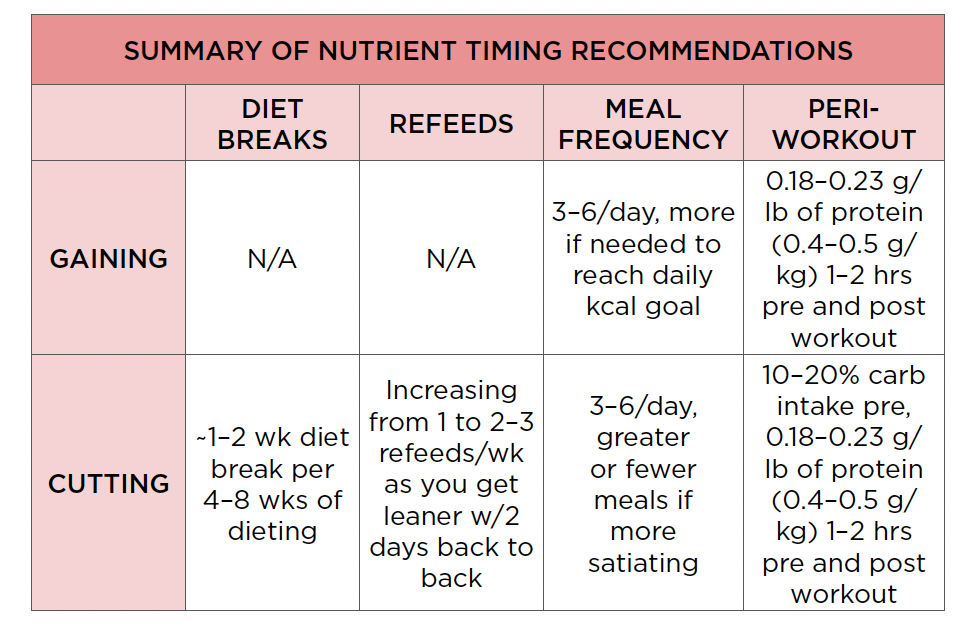
Considerations when cutting
- Eat a normal sized meal containing both carbs and protein 1 to 2 hours before you train and again 1-2 hours after you train.
- This meal should contain roughly 0.2 g per pound (0.4 to 0.5 g/kg) of protein, and should have roughly 10–20% of your daily carbohydrate intake (and 10–15% of your daily fat intake to slow digestion if you experience reactive hypoglycemia) depending on individual tolerance.
Considerations when gaining
- Train no longer than 2.5 hours after having at least one meal containing protein in your body and then eat another of your meals containing protein within 2 hours post-training.
- If you train a lot, the recommendation is to consume a drink containing 8 to 15 grams of protein and 30-60 grams of carbs mixed between pre- and intra-workout if the gym time reaches or exceed 2 hours of continuous, hard training.
💊 Supplementation
Supplements are the least important part of nutrition and not entirely necessary for success with your fitness goals.
By the way, Examine.com is a great website that shares a bunch of great information on different supplements that’s definitely worth checking out.
The A-List – Supplements with an Evidence Basis
Multivitamins
If you’ve got everything else under control, one multivitamin a day is enough. But you can get basic multivitamins geared towards common deficiencies (check your bloods).
Essential fatty acids (EPA and DHA)
Fish oil has a long and impressive history. It reduces symptoms of depression, decreases risk of cardiac death, decreases blood pressure, etc.
Vitamin D3
Severe deficiency can cause osteoporosis and can be a contributing risk factor for cancer, hypertension and a number of autoimmune diseases.
I live in the UK where the sun is lacking, so this is important for personal health and performance.
Only supplement with Vitamin D if you have had a blood test showing your 25(OH)D levels are below 75 nmol/L and don’t think that the higher you can get your levels the better. Once you have corrected the insufficiency, there is no evidence to support improved health or performance by going higher.
Creatine monohydrate
Supplemental creatine heps you perform strength and power based activities, and reliably results in increased strength, power, and muscle mass when used chronically.
An intake of 0.02 g/lb of body weight per day (0.04 g/kg/day) is what has been shown to be effective (about 3-5g per day).
Caffeine
There are some pre-workouts that are effective, but caffeine is just as effective. To suppress tiredness doses of 0.5–1.4 mg/lb/day (1–3 mg/kg/day) are appropriate.
Also, caffeine can improve acute resistance-training performance, including strength and muscular endurance. To get this effect, take 1.8–2.7 mg/lb (4–6 mg/kg) approximately 60 min before training.
But caffeine tolerance (which can happen quickly with regular use) can diminish the performance enhancing effects. So if you feel great and ready to train, you might not need to take caffeine pre-workout at all.
The B-List – Mixed Evidence Supplements
Beta-alanine
Beta-alanine can be thought of as the muscular endurance version of creatine monohydrate.
I would argue that only during phases of training where high reps (15–20+) are emphasised, if lifting is intermixed with other exhaustive exercise (such as in CrossFit) or potentially if you are regularly performing continuous efforts lasting 60 seconds or longer, beta-alanine might be worth considering. If that is the case, taking 3–4g/day may result in a potential small benefit.
Citrulline-Malate
Citrulline may aid performance by increasing blood flow to working muscles through an increase in nitric oxide (a vasodilator), and by helping to clear ammonia (a marker of muscle fatigue).
The C-List – Supplements Without an Evidence Basis
Glutamine
This is the most abundant amino acid in the body. But there is no evidence that supplementary glutamine improves body composition or performance.
Branched Chain Amino Acids (BCAAs)
If your protein intake is already high BCAAs are unlikely to do much. Plus, what limited evidence exists that could be construed to support the use of BCAAs is flawed (I’ll share some more information on this at some point).
Beta-hydroxy-beta-methylbutyrate (HMB)
HMB has been investigated for over two decades as an ergogenic aid for improving resistance training performance and increasing lean body mass via a reduction in muscle protein breakdown. But, again, there’s no clear evidence basis for its effectiveness.

